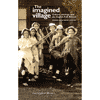
GEORGINA BOYES The Imagined Village: Culture, Ideology And The English Folk Revival (Revised Illustrated Edition)
No Masters Co-Operative Limited ISBN 9780956622709
Wow! Is it really 18 years since Georgina Boyes's book was first published? It has been unavailable for some time now, and is consequently much sought after, so three cheers for the No Masters Co-operative for restoring it to the shelves of our bookshops. The front states in bold type that this is a "Revised Illustrated Edition". It isn't. Yes, it is an illustrated edition with 28 new photographs of dancers and customs - no singers - and really good ones at that. Revised? No. It's exactly the same as the original text, which I feel is an opportunity missed. So you don't need to buy it if you already possess the first edition (unless you want the new illustrations). Apparently no books of interest on the subject have been published since 1993 whilst a new generation coming fresh to this book may look rather blankly at statements such as "in the light of current debates on the future of Cecil Sharp House" whilst references to the excesses of the "White Heather Club" may leave them puzzled rather than inducing a chilled shudder and a cold sweat as it does with most of my generation.
The original volume was an academic text (Manchester University Press) and consequently is often, well, academic. It seems to feel obliged to liberally sprinkle terms such as Männerbund, Proletkult and "gesunkenes Kulturgut" which appear to have no English equivalent and sit oddly with their English examples. In contrast, the writing is fluid and readable and is enlightened by many shafts of wonderful humour (I particularly like the description of the Vicar of Thaxted, Conrad Noel's beliefs as "an ideological tossed salad" - this really hits the mark).
As may be expected there are strange omissions, usually examples which don't chime with descriptions of how folk-song collectors went about their business, set up in a way which makes the reader cast their 21st century judgement on late 19th and early 20th -century mores. An example is the almost total omission of the work of Percy Grainger, who doesn't seem to fit the required stereotype. When describing the collectors' descriptions of their sources as "vague generalisations" and their sources' comments as "silence", no account need be taken of Grainger's mania for gathering information about his sources, so much so that H. G. Wells famously commented to him "You are trying to do a more difficult thing than record folk-songs; you are trying to record life". As for his silent source - Ann Wixey described the visit of the collecting group which included Grainger as "really beautiful company". Indeed Grainger's only appearance is to be beaten by a stick of his own creation when the author ridicules his deception of one of his singers based on Grainger's own vainglorious and fictional recollection in his "Anecdotes", written 50 years after the vent and since debunked, but here treated as gospel.
Many opinions are stated as if they are fact. To say "by expropriating only a few elements [i.e. the tune] of complex performances, classical musicians elided 'treasure trove' and travesty", and describe this as "problematic" is in itself a travesty of the situation as many others who "elided" the tune to use with songs as disparate as "Star of the County Down", the formulaic murder shocker "Maria Marten" and numerous Music Hall parodies will attest. On the other hand, her writing on the "expropriation of treasured items" may well have been a major event, although the uneasy use of dance and custom examples to illustrate song is "problematic" and she could have used the more recent examples of the uproar at Tony Barrand's publication of the Chipping Campden dances in the teeth of the known wish of the dancers themselves that the material not be published, or the Suffolk singer "Holy" Jimmy Knights requiring a payment for any songs which Carolanne Pegg recorded as part of her doctoral work - and the reaction of the collector to this.
There is also no new final chapter to bring the work up-to-date so it rather peters out in the early 1960s - perhaps readers could move on to Michael Brocken's fascinating but flawed "The British Folk Revival 1944-2002" as a pendant to the current work. It also would be interesting to set the content of Boyes's book in the context of what was happening in other European countries - her work here on Rolf Gardiner's fascination with the German Nationalist Socialist youth movement makes one eager for this.
As you can see, I don’t agree with everything the author has written. I do agree with much of it. This is a good thing, because it shows how an excellent book can stimulate people to consider their own reactions to situations, justify their own positions and make them get out and investigate things for themselves.
Apart from the misinformation about the "revised" edition, this book is wholly to be welcomed. It is well-written, vastly researched (the amount of background reading is mightily impressive and appears to include, as well as many unpublished academic dissertations, the complete "Abbey School" series of books by Elsie Oxenham!) As such it is still an absolutely essential read and stands tall in the ranks of folksong scholarship.
Paul Burgess
| Buy
this CD online from The Listening Post The Listening Post is the CD mailorder service of The Living Tradition magazine. This album was reviewed in Issue 88 of The Living Tradition magazine. |

